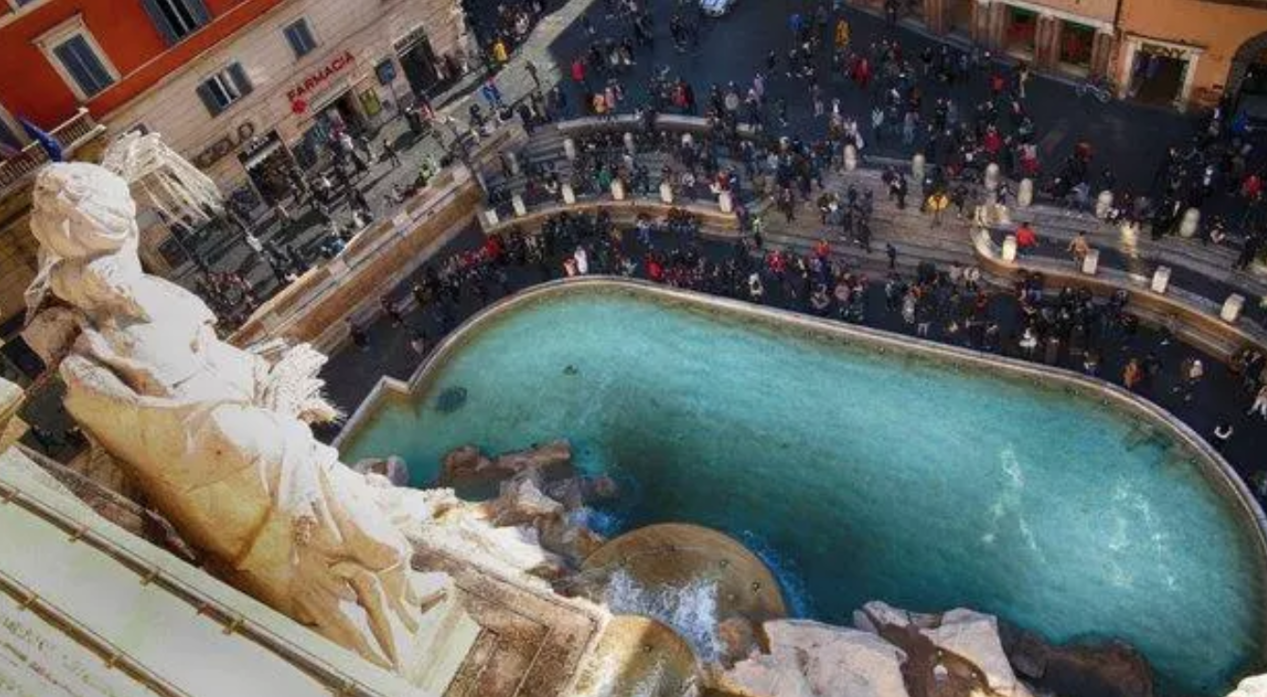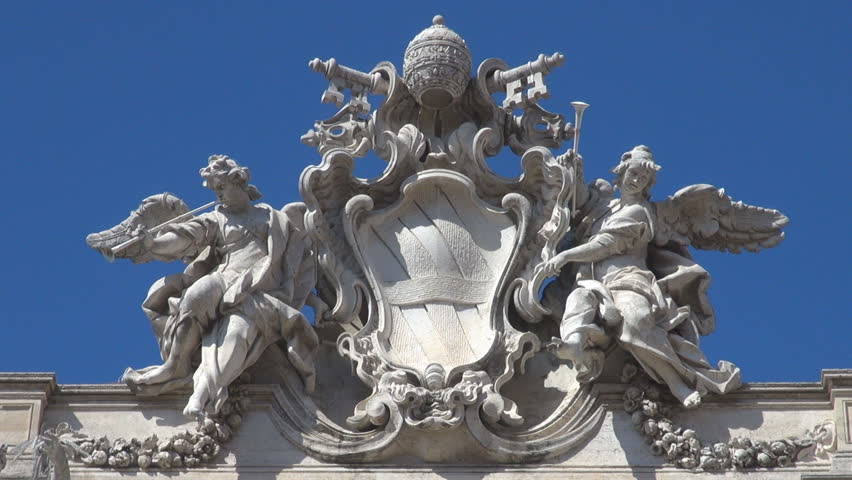The Trevi Fountain Like You’ve Never Seen it Before
Built in the 1500s and renovated during the 1700s and 1800s, Palazzo Poli is located in one of the highest points in Rome and serves as the backdrop of the iconic Trevi Fountain, a symbol of the city which attracts thousands of tourists every day.
Part of the National Institute for Graphics, the historical palazzo is being turned into a museum. Visitors will be able to tour its beautifully decorated rooms and then proceed up the spiral staircase leading the main attraction: a glorious terrace with breathtaking views of the city and of the fountain designed by Nicola Salvi in 1762, situated directly below.
From this unique perspective, visitors will have the chance to see the Roman landmark, which has been featured in countless films (most famously, La Dolce Vita and Roman Holiday) in a whole new light. They will be able to admire details they’ve never seen before, like the two minutely rendered tuba-playing angels holding up the emblem of Pope Clement XII at the very top.
The idea of turning Palazzo Poli into a museum came from Maria Cristina Misiti, the Director of the National Institute for Graphics. “The path is designed to introduce visitors to Palazzo Poli and to its long history in the heart of Rome, as well as that of its interesting inhabitants,” she says.
Ownership of the palace was passed between many important Roman families. It belonged to the Conti family, from which Pope Innocent XIII hailed, before coming into the hands of the Corsini, who launched the construction of the Trevi Fountain. In the 1800s, it became the theatre of prestigious artistic and cultural salons hosted by Russian Princess Mariya Volkonskaya.
Visitors will have to wait a little longer to experience the beauty and discover the fascinating history of this gem, which like many places in Rome and across Italy, had been quietly hiding in plain sight.




































i-Italy
Facebook
Google+
This work may not be reproduced, in whole or in part, without prior written permission.
Questo lavoro non può essere riprodotto, in tutto o in parte, senza permesso scritto.